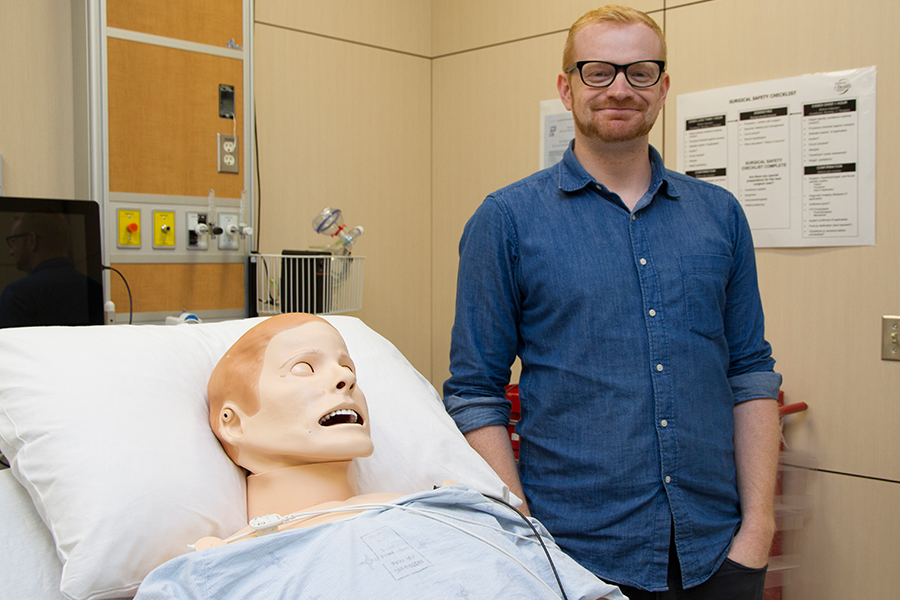
Model behaviour
My day can go from putting makeup of a burn on a mannequin to setting up the medical scenario.
By Lesley PorterMalcolm Whyte wears many, many hats.
As a simulation technology specialist, he recreates medical and clinical scenarios for health science students in the interprofessional Clinical Learning Resource Centre (CLRC). This requires a delicate, tactful mix of skills and knowledge, ranging from information technology and audio/ video to health care, education and theatrics.
“My day can go from putting makeup of a burn on a mannequin to setting up the medical scenario and getting supplies ready to scripting out what we’re going to say and programming a mannequin,” he said.
In total, he manages about 30 mannequins, which are used at distributed learning sites across the province. But these mannequins are no dummies. The most realistic, or high-fidelity, mannequins can be programmed to speak, bleed, sweat, blink, seize and respond physiologically to medical intervention. “They’re basically advanced computers with arms and legs,” he said. “They have different parts in them that mimic us.”
With such versatile technology at his fingertips, Whyte can let his creativity flow with certain simulations, especially if he’s providing the voice of the patient. “Sometimes I like to play a 40 year old who cut his finger on a tractor. He gets septic shock, and I like to give him a Southern kind of accent,” he said with his best low drawl.
While amusing, the dash of personality adds to the realness of the scenario and keeps the students engaged with their patient. “It helps people buy in because they realize, ‘oh, I’m not just looking at this plastic thing, this is an actual person and I have to treat him like an actual person.’” For Whyte, who has a background in IT, electronics and broadcasting, seeing that “lightbulb moment” is very rewarding.
He said that the main advantage of simulation technology is to give students a controlled place to practice and think on their feet. “We make things as real as we possibly can here so if you make a mistake—which in a way, is kind of encouraged—that this is a safe learning environment.”
This article was originally published by On Campus News.
